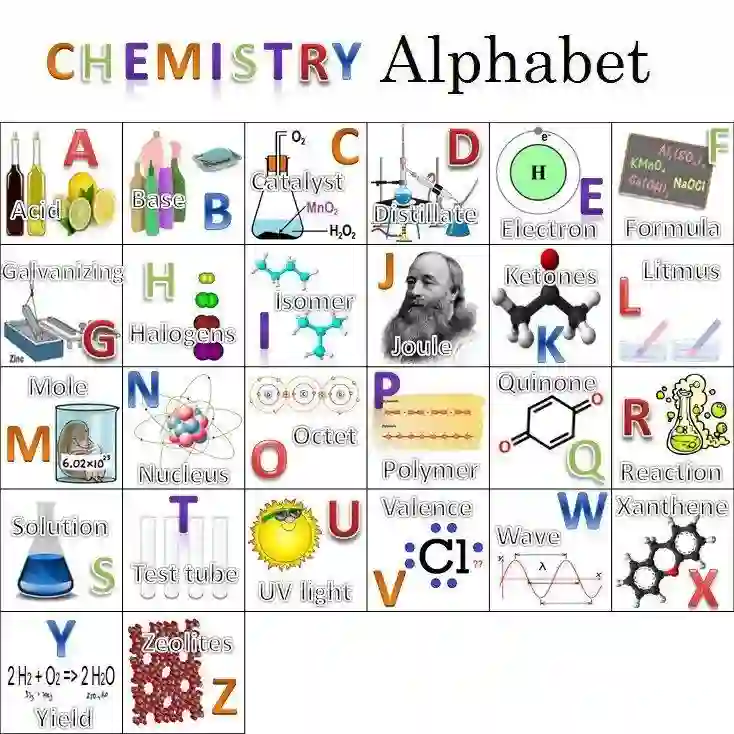A-Z of Science Words That Start with “R”

Science is full of amazing words that can be hard to understand. This blog post will help you learn some of the most interesting science words that start with “R.”
We will cover a wide range of topics, from biology and chemistry to physics and astronomy. We will also include some fun facts and examples to help you remember these words.
Biology
- RNA interference (RNAi): A cellular process that can silence genes by targeting specific RNA molecules. It has applications in gene therapy and understanding gene function.
- Recombinant DNA: DNA that has been artificially created by combining DNA from different organisms. This technology is used to produce genetically modified organisms (GMOs) and various biopharmaceuticals.
- Ribonuclease: An enzyme that breaks down RNA molecules. They play crucial roles in cellular processes, such as gene regulation and RNA turnover.
- Radial symmetry: A type of symmetry where an organism can be divided into equal halves along any plane passing through its central axis. Examples include starfish and jellyfish.
- Rhizome: A modified underground stem that stores food and can produce new plants. Examples include ginger and bamboo.
Chemistry
- Rate law: An equation that expresses the relationship between the rate of a chemical reaction and the concentrations of the reactants.
- Resonance structure: A representation of a molecule where multiple Lewis structures can be drawn and contribute to the overall structure.
- Redox titration: A quantitative analytical technique used to determine the concentration of a substance by measuring its oxidizing or reducing power.
- Radioisotope: An isotope of an element that is radioactive. They have various applications in medicine, research, and industry.
- Reversible reaction: A chemical reaction that can proceed in both directions. Examples include the Haber process for ammonia production and the acid-base equilibrium.

Physics
- Relativistic mass: The mass of an object as measured by an observer in relative motion to the object.
- Refractive index: A measure of how much a substance bends light. It is used in lenses and optical instruments.
- Rotational kinetic energy: The energy possessed by an object due to its rotation.
- Resonant frequency: The frequency at which a system vibrates with maximum amplitude.
- Relativistic Doppler effect: The change in frequency of a wave due to relative motion between the source and the observer.
Astronomy
- Redshift: The shifting of light towards longer wavelengths due to the expansion of the universe. It is used to measure the distance to galaxies.
- Regolith: A layer of loose, unconsolidated material that covers a solid rock body. It is found on planets like the Moon and Mars.
- Roche limit: The minimum distance at which a satellite can orbit a planet without being torn apart by tidal forces.
- Refractory materials: Materials that are resistant to heat and melting. They are used in spacecraft and high-temperature applications.
- Radial velocity: The speed of an object moving towards or away from the observer. It is used to detect exoplanets.
Additional Terms
- Receptor tyrosine kinase: A type of receptor protein that is activated by binding to a ligand and initiates a signaling pathway.
- Rheology: The study of the flow and deformation of matter.
- Radiocarbon dating: A technique used to determine the age of organic materials based on the amount of radioactive carbon-14 present.
- Refraction: The bending of light as it passes from one medium to another.
- Retrograde motion: The apparent backward motion of a celestial object as seen from Earth.

Conclusion
As we’ve explored the vast expanse of science words beginning with “R,” it’s evident that this letter encompasses a diverse range of concepts across various fields. From biology to physics, chemistry to astronomy, the “R” in science signifies a multitude of intriguing terms and phenomena.
By understanding these words and their applications, we can gain a deeper appreciation for the complexities and interconnectedness of the scientific world. Whether you’re a student, researcher, or simply curious about the universe, the “R” words offer a fascinating gateway to exploration and discovery.
Frequently Asked Questions
1. What is the difference between a receptor and a ligand?
- A receptor is a protein molecule on the surface of a cell that receives signals from other cells or molecules.
- A ligand is a molecule that binds to a receptor, triggering a cellular response.
2. How does RNA interference work?
- RNA interference involves the use of small RNA molecules to target and degrade specific mRNA transcripts, effectively silencing gene expression.
3. What is the significance of redox reactions in chemistry?
- Redox reactions are essential for many biological and chemical processes, such as respiration, photosynthesis, and corrosion.
4. How is radioactivity measured?
- Radioactivity is measured using a Geiger counter or other radiation detection devices.
5. What is the difference between a star’s rotation and its revolution?
- Rotation refers to the spinning of a star on its axis.
- Revolution refers to the orbiting of a star around another celestial object, such as in a binary star system.
6. Can you provide an example of a refractory material?
- Refractory materials are highly heat-resistant. Examples include tungsten, molybdenum, and certain ceramics.
7. What is the role of RNA in protein synthesis?
- RNA plays a crucial role in protein synthesis. mRNA carries genetic information from DNA to the ribosomes, where tRNA brings amino acids to the ribosomes to assemble the protein.
8. How does the Doppler effect explain the redshift of light from distant galaxies?
- The Doppler effect explains how the wavelength of light is affected by the relative motion between the source and the observer. The redshift of light from distant galaxies indicates that they are moving away from us, suggesting the expansion of the universe.

9. What are some examples of resonant frequencies in everyday life?
- Resonant frequencies are observed in musical instruments, where the vibrations of the instrument match the natural frequency of the sound waves. Another example is the Tacoma Narrows Bridge, which collapsed due to resonance caused by wind.
10. How does the Roche limit affect the stability of planetary rings?
- The Roche limit determines the minimum distance at which a satellite can orbit a planet without being torn apart by tidal forces. Planetary rings exist within the Roche limit of their respective planets.










